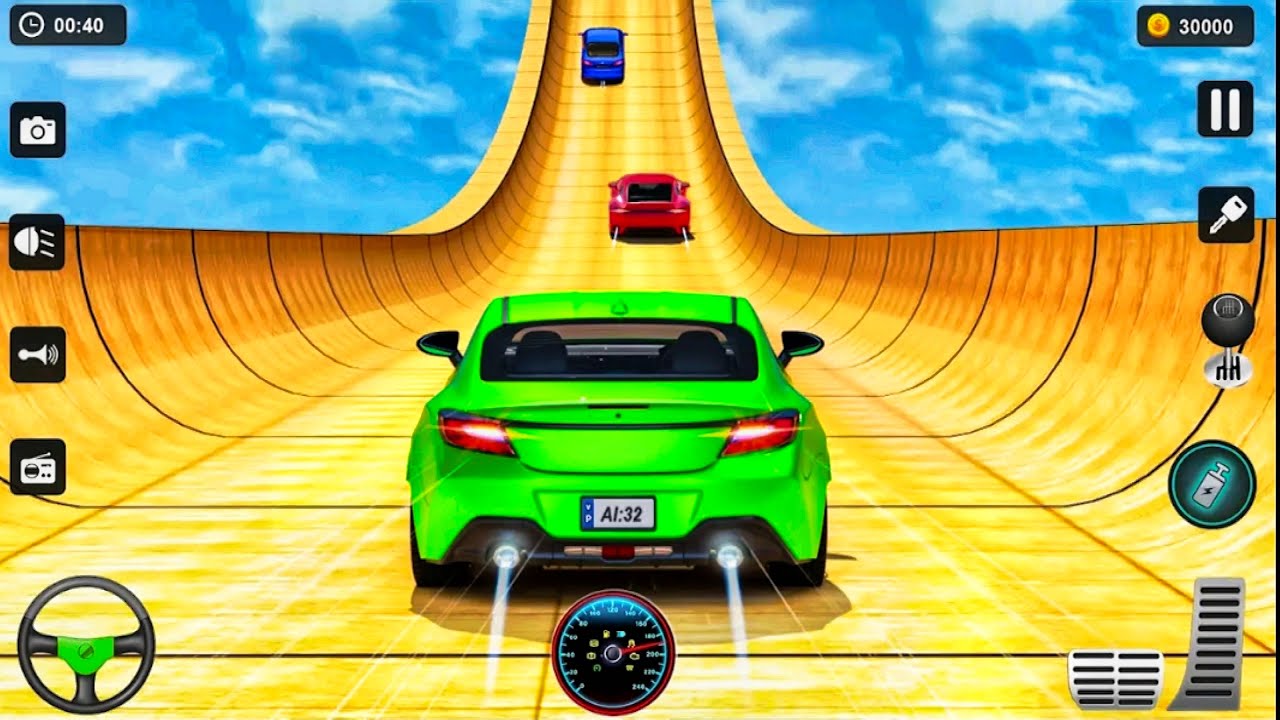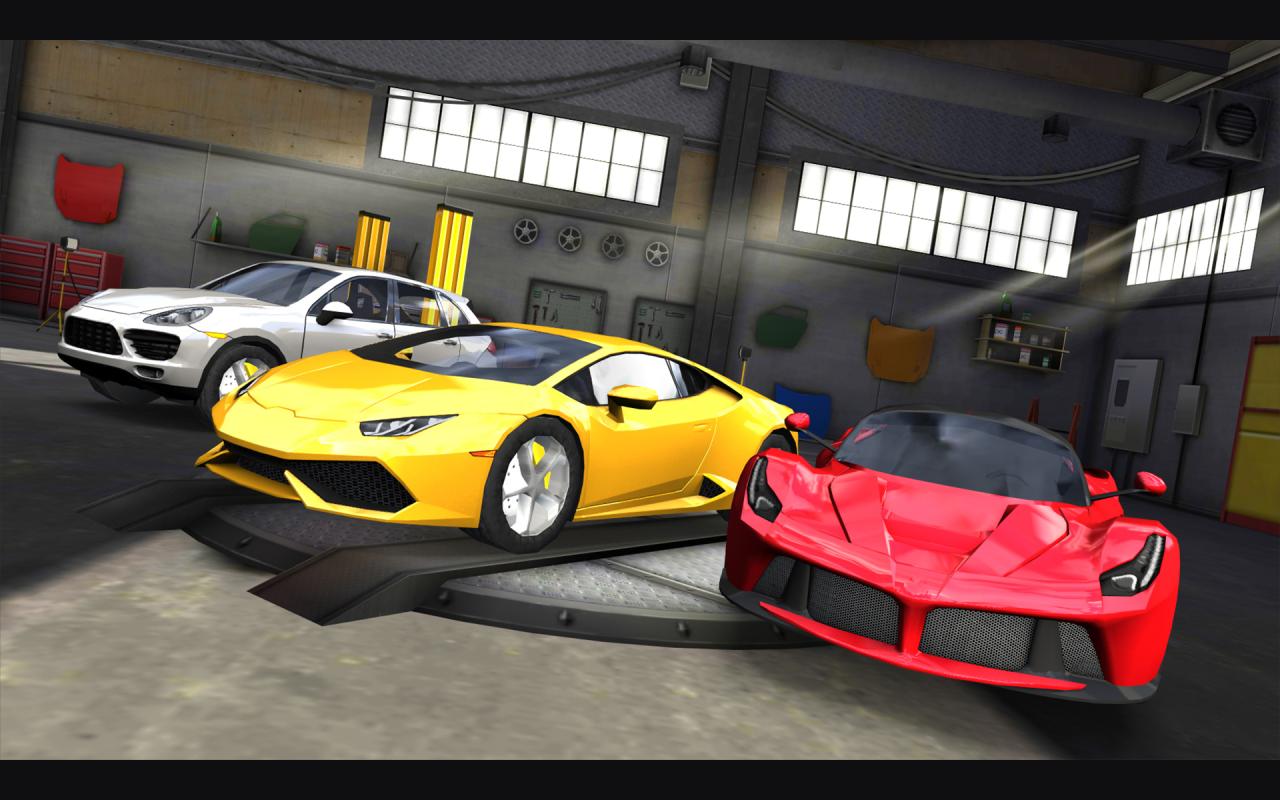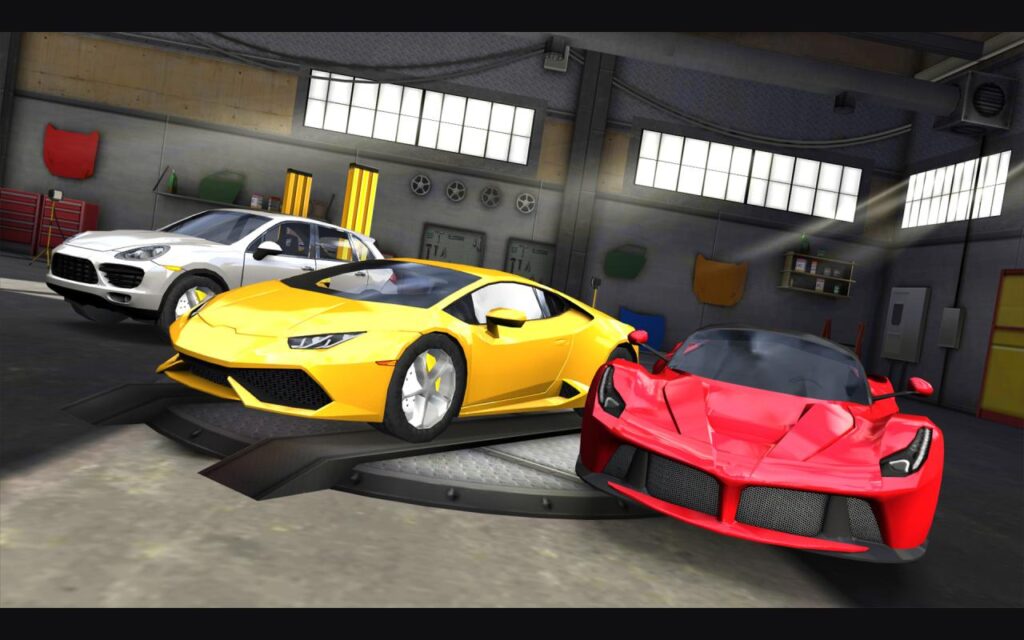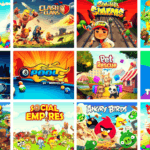Car games take center stage as one of the most thrilling and immersive gaming experiences available today. From high-speed racing competitions to realistic simulations and expansive open-world adventures, the variety within this genre is captivating. Players are drawn not only by the excitement of the race but also by the intricate details of game design, including driving physics, soundscapes, and the vibrant communities that enhance the overall experience.
With a range of genres, car games offer something for everyone, whether you prefer the adrenaline of arcade racing or the meticulousness of simulation games. Understanding these different styles and the innovations in game development gives players insight into what makes car games so appealing. Additionally, the role of online multiplayer has revolutionized how gamers interact and engage, making it an essential aspect of modern car gaming.
Popular Car Game Genres: Car Games

Car games have carved a niche in the gaming industry, captivating players with adrenaline-pumping experiences and intricate gameplay mechanics. This genre encompasses a variety of gameplay styles, each offering unique features that appeal to different audiences. From high-speed racing to immersive simulations, the diversity found in car games caters to both casual gamers and hardcore enthusiasts alike.
Racing Games Features and Examples
Racing games are primarily focused on speed and competition, where players race against opponents or against the clock. They often include a range of vehicles, tracks, and powerful in-game upgrades that enhance performance. Racing games can be categorized into different types, including circuit racing, drag racing, and rally racing.
Key features of racing games include:
- Realistic vehicle physics that emulate real-world driving conditions.
- Diverse environments ranging from urban streets to rural landscapes.
- Customization options for vehicles, allowing players to tweak performance and aesthetics.
- Multiplayer modes that foster competitive play among friends or online communities.
Popular titles in this genre include “Mario Kart,” known for its fun and whimsical approach to racing, “Forza Horizon” for its stunning graphics and open-world gameplay, and “Gran Turismo” for its realistic driving simulation.
Differences Between Simulation and Arcade-Style Car Games
The distinction between simulation and arcade-style car games lies in the gameplay mechanics and the level of realism. Simulation games strive for an authentic driving experience, focusing on realistic car handling, physics, and environmental factors. On the other hand, arcade-style games prioritize fun and accessibility, often featuring exaggerated physics and forgiving controls that allow players to enjoy an exhilarating experience without the steep learning curve.
Characteristics of simulation games include:
- Detailed car models and real-world performance metrics.
- Comprehensive driving mechanics that require skill and precision.
In contrast, arcade-style games feature:
- Fast-paced, action-oriented gameplay.
- Power-ups and boosts that add excitement and variety.
Well-known examples of simulation games are “Assetto Corsa” and “Project CARS,” while “Need for Speed” and “Burnout” represent the arcade-style experience.
Elements That Make Open-World Car Games Captivating
Open-world car games offer players the freedom to explore vast environments at their own pace. This genre enhances the gaming experience by allowing players to engage in various activities beyond racing, such as completing missions, discovering hidden locations, and interacting with the game world.
Key elements that contribute to the appeal of open-world car games include:
- A rich and immersive environment that encourages exploration and discovery.
- Diverse side missions and challenges that keep the gameplay fresh and engaging.
- The ability to make choices that affect the game’s world and story progression.
Notable open-world titles include “GTA V,” which integrates driving within a sprawling city, and “The Crew,” which features a vast map of the United States for players to traverse. The combination of freedom, exploration, and dynamic gameplay elements makes open-world car games a favorite among players seeking a comprehensive gaming experience.
Game Development in Car Games

The world of car game development is a complex and fascinating field that combines art, technology, and creativity. From crafting realistic driving physics to creating immersive environments and enhancing audio experiences, developers strive to deliver engaging gameplay that captivates players. This segment delves into the critical aspects of game development in car games, exploring how each element contributes to the overall player experience.
Designing Realistic Driving Physics
Creating realistic driving physics is essential in car games, as it significantly affects how players interact with the game. Developers utilize sophisticated algorithms and physics engines to simulate real-world driving dynamics, including acceleration, braking, and handling. The process involves:
– Vehicle Dynamics Simulation: This entails the mathematical modeling of forces acting on the vehicle, including friction, momentum, and inertia. Different types of vehicles require distinct physics adjustments, ensuring that each car feels unique.
– Environmental Interaction: The game’s physics must accurately reflect the interaction between the vehicle and various terrains, such as asphalt, gravel, or off-road conditions. For instance, the traction a car has on wet surfaces differs from dry ones, influencing gameplay.
– Feedback Mechanisms: Developers implement force feedback systems that allow players to feel the car’s movements through their controllers, enhancing immersion. This feedback includes sensations like steering resistance and vibrations simulating road conditions.
Realistic driving physics ensure that players feel a connection to their vehicles, leading to more engaging and satisfying gameplay.
Creating Immersive Environments
Immersive environments play a pivotal role in car games, transporting players into detailed and dynamic worlds. Developers employ various strategies to enhance the visual and interactive quality of game settings:
– High-Quality Graphics: Advanced graphics engines are used to create stunning visual effects, including realistic lighting, shadowing, and reflections. This attention to detail helps create lifelike environments that draw players in.
– Dynamic Weather and Day-Night Cycles: Incorporating changing weather conditions and time cycles adds a layer of realism to the game. For example, a rain-soaked track can alter driving dynamics and challenge players’ skills.
– Interactive Elements: The inclusion of destructible environments and moving NPCs (non-playable characters) makes the world feel alive and responsive. Players can experience different scenarios, such as racing through a bustling city or navigating an intricate mountain pass.
Immersive environments enhance the player’s emotional connection to the game, making every race a unique experience.
Importance of Sound Design, Car games
Sound design is a crucial element in enhancing a player’s experience within car games. It contributes significantly to the game’s atmosphere and helps communicate important gameplay information. Key aspects of sound design in car games include:
– Engine Sounds: Each vehicle has distinctive engine roars that reflect its characteristics. Accurate audio reproduction of engine sounds enhances realism and helps players gauge their vehicle’s performance.
– Environmental Sounds: The ambient sounds of the environment, such as wind, rain, and tire screeching, enrich the gameplay experience. These sounds provide feedback about the current driving conditions and enhance immersion.
– Dynamic Soundscapes: Soundtracks that change based on the game’s context, such as high-energy music during intense races or softer tunes for scenic drives, help maintain the player’s emotional engagement.
Effective sound design can elevate a car game from a simple racing experience to an unforgettable adventure.
Community and Online Multiplayer in Car Games

The rise of online multiplayer modes in car games has transformed the gaming landscape, significantly increasing player engagement and community interaction. With the ability to race against friends or compete with players worldwide, the social aspect of these games has flourished, fostering a sense of camaraderie and competition among enthusiasts. Furthermore, the integration of community mods and custom content adds an additional layer of personalization and creativity, enhancing the overall gaming experience.
Impact of Online Multiplayer Modes
Online multiplayer modes have revolutionized how players interact with car games. These modes enable players to join races, compete in leagues, and participate in events that keep the gameplay fresh and exciting. The competitive nature of multiplayer racing often leads to increased player retention, as gamers are more likely to stay engaged when they have access to dynamic, real-time competition.
Moreover, the social aspect is paramount, as players often form friendships, join racing clans, and even participate in virtual meet-ups. The use of voice chat and forums enhances communication, allowing for strategy discussions and community building. Popular titles like “Forza Horizon” and “Gran Turismo Sport” exemplify successful online multiplayer implementations, offering features such as ranked matches, seasonal events, and collaborative challenges that motivate players to return regularly.
Role of Community Mods and Custom Content
Community mods and custom content play a crucial role in extending the lifespan of car games. These contributions from dedicated fans allow players to experience new vehicles, tracks, and game modes that developers may not provide. The modding community can significantly enhance the graphics, physics, and gameplay mechanics, offering a personalized touch that caters to diverse player preferences.
For instance, games like “Assetto Corsa” thrive on community creation, with thousands of user-generated mods available for download. This includes everything from realistic car models to entire new racing circuits. Engaging with these mods not only enriches the gaming experience but also fosters a sense of ownership and creativity among players, encouraging them to share their own creations with the community.
Comparison of Platforms for Online Multiplayer Car Games
Different platforms for playing car games online each offer unique features that cater to varying player preferences. Understanding these differences helps players choose the best environment for their gaming style.
– PC: The PC platform is often regarded as the most versatile for car games. Players have access to a wide range of modifications and user-generated content, enhancing their experience. High-performance hardware allows for superior graphics and smoother gameplay, especially in simulations like “iRacing” or “Project CARS.”
– Consoles (PlayStation and Xbox): Consoles provide a more streamlined experience, with a focus on ease of use. Multiplayer functionalities are integrated into the system, allowing players to quickly join friends or participate in online events. Titles like “Gran Turismo Sport” and “Forza Motorsport” are optimized for console play, emphasizing competitive racing with unique features like leaderboards and community challenges.
– Mobile: Mobile car games have gained popularity due to their accessibility. While graphics and gameplay may not match those of consoles or PCs, titles such as “Asphalt 9: Legends” offer engaging multiplayer experiences with quick races and simplified controls. The ability to play on-the-go allows for casual gaming sessions and fosters a broader audience.
Community engagement and multiplayer modes are essential for creating a vibrant and lasting car gaming ecosystem.


